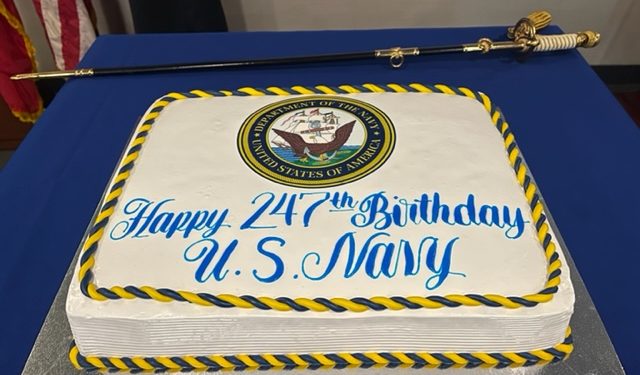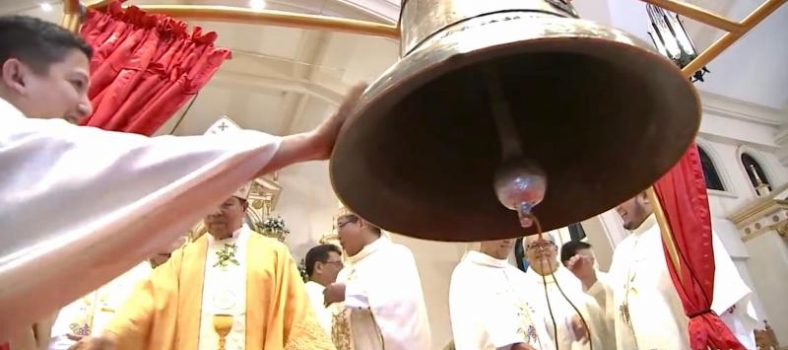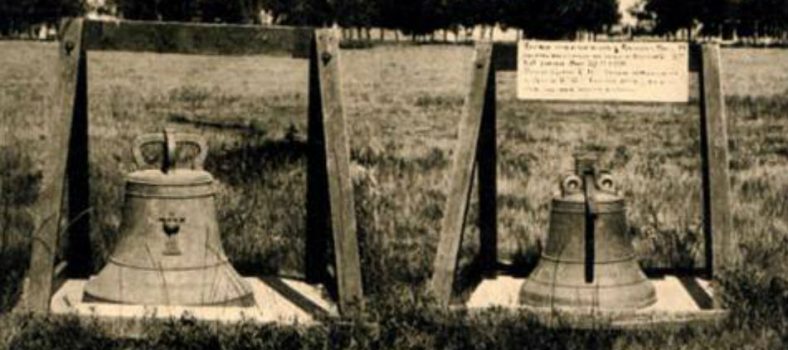247th Anniversary of the U.S. Navy: Remarks by Dennis Wright, Capt, U.S. Navy (ret.)
247TH US NAVY BIRTHDAY CELEBRATION
MAKATI ELKS CLUB
MAKATI CITY, PHILIPPINES
OCTOBER 15, 2022
Remarks by Dennis L. Wright, Capt, U.S. Navy (ret.)
Good afternoon. It is a real pleasure for me to be here with you today as we mark the 247th anniversary of the founding of the United States Navy.
But before I begin, let me first recognize and thank the elks and all those involved in planning and hosting this event. As we would say in the navy, bravo Zulu! – – well done.
When our Navy was first formed on October 13, 1775, it paled in comparison to the colonial fleets of England, France and Spain. Today, it is unrivaled thanks to the vision of our forefathers. But it took more than just a vision, it also took technological advances and American ingenuity. But even more importantly, it took the dedication, spirit and sacrifices of those sailors that served. This is what I want to talk with you about today.
If you ask people to tell you something about the navy, they might recall the 122-year history of Army-Navy football and how Navy shut-out the Army 24-0 in that first game back in 1890. Or how the Navy has gone on and dominated the Army amassing 62 wins with only 53 losses and 7 ties including the Navy’s impressive 14 consecutive game win streak from 2002 to 2015 and of course who can forget last year’s 17-13 Navy victory. But enough about who has the better team. Oh, you want to ask about the Air Force – – they are in a whole another league.
Now if football is not on their minds, they might think of some of the great naval movies such as “Run Silent, Run Deep”, “In Harm’s Way”, “Men of Honor”, “Officer and a Gentleman”, “Midway”, “Tora Tora Tora”, “Hunt for Red October” or one of my personal favorites “Sand Pebbles”, starring Steve McQueen. Or this year’s top grossing move, “Top Gun: Maverick,” with Tom Cruise.
Perhaps others may think of famous naval leaders or battles including John Paul Jones, often thought of as the Father of the Navy, who replied “I have not yet begun to fight” while aboard the Bonhomme Richard in 1779 fighting the British when he was asked if he would surrender. Or one of our greatest Naval Commanders, Oliver Hazard Perry, who 33 years later during the War of 1812 forced an entire British squadron to surrender when he declared “we have met the enemy and they are ours.” Or still later, in 1898, right here in Manila Bay when Commodore Dewey gave the order “you may fire when ready Gridley” as the American Fleet engaged and defeated the Spanish Navy. Some may also recall WWII Admirals Chester Nimitz and Bull Halsey or others who served such as Lieutenants John F. Kennedy, Jimmy Carter and George H. W. Bush, or Lieutenant Commander Gerald Ford and commanders Lyndon Johnson and Richard Nixon who all went on to become presidents.
For those of us living here in the Philippines, it would not be uncommon to think about the tens of thousands of Filipinos who have served in the U.S. Navy. For many years, the navy would recruit up to 2,000 young Filipinos to serve side by side with their American counterparts. While initially, they served as stewards due to limitations for foreign nationals to obtain security clearances, over the years the Navy opened other ratings where clearances where not a prerequisite. So today it is not uncommon to see hundreds of Filipinos serving on our largest ships. In fact, when I was Supply Officer on the Abraham Lincoln, 19 percent of my 700-man Supply Department had Filipino roots.
My first personal exposure and intimate working relationship with Filipino shipmates occurred in 1972 onboard USS Eversole, an old WWII tin-can. It was my first commissioned tour. I was serving as First Lieutenant where I was responsible for the deck division and all the boatswain mates. However, I had an additional collateral duty assignment as wardroom mess caterer where I was responsible for a half dozen Filipino stewards taking care of the officers and wardroom. The first challenge was learning a whole new vocabulary of names, such as Mayoralgo, Oani, Pico, Briones, Bermudez, Polanco and Abalos, or even more fun, their nicknames. Then later in May 1973, USS Eversole was tasked to make a port call at Port Townsend, Washington for their Annual Rhododendron Festival. We used a med moor, where the stern is tied to the pier, with our bow protruding out perpendicular into the sound and secured with both port and starboard anchors. This effectively made a great fishing pier. Many of the American sailors in the crew had fishing gear on board while the Filipinos improvised using fishing line rolled up around bottles as they all got their hooks into the water. Everyone caught fish. The cooks had a lot of latitude back then and fried the filets in the galley, while the Filipinos stewards insisted on keeping the fish heads to make “Sinigang na Ulo”. This was another important lesson, learning about and respecting the diversity and the cultural differences of my shipmates who come from all walks of life to create a vibrant and effective crew. The essence of the Navy.
Through the years, we’ve witnessed a broadening of opportunities for all shipmates, regardless of their ethnicity or backgrounds, especially for those of Filipino descent. For example, on the Abraham Lincoln, my food service officer was Warrant Officer Mark Barcelon, who was responsible for feeding 6,000 men four times a day. My leading departmental chief was Master Chief Magpantay. Two decades later, Captain Ronald Ravelo, would be the first Filipino American to assume command of an aircraft carrier while for eight years, the physician to the President in the White House, was RAdm Eleanor Marinaro herself the daughter of a Navy Master Chief Petty Officer.
Hence, I think it is only fitting then that the Secretary of the Navy, just five months ago, announced that the Navy would honor and recognize the decades of contributions of our sailors and shipmates of Filipino-descent by naming the next Arleigh-Burke Class Guided Missile Destroyer in honor of Fireman Second Class Telesforo de la Cruz Trinidad. Petty Officer Trinidad is the only Filipino sailor ever awarded the Medal of Honor for his bravery and heroics saving the lives of two of his shipmates after a major boiler room explosion and fire onboard the armored cruiser, USS San Diego, in 1915 off the coast of Mexico, this despite sustaining serious burns about his own face and body. Petty Officer Trinidad was from New Washington, Aklan province, Panay and went on to retire from the navy. He passed away in 1968 at the age of 77 in Imus, Cavite. One can only imagine how proud he would have been and how proud his family is, including his eldest grandson, Manny Trinidad, who is with us this afternoon. His daughter, Delores Trinidad Bagallon, was planning on being here but had to cancel at the last minute due to health problems.
And while it is great and honorable that we memorialize our heroes, leaders and famous battles, what I really want to focus on are the 390,000 unnamed sailors serving in our active and reserve forces today on some 343 war ships, many shore stations and in overseas assignments as well as those millions that have served over the past 247 years. These unnamed sailors and shipmates are the unsung heroes of the Navy. The moms and dads, sons and daughters, brothers and sisters, nieces and nephews or friends who joined the finest navy in the world and earned the right and privilege to be called “sailors” and “shipmates’.
To wear the “white hat”, to be called a “sailor” and “shipmate” is truly an honor, and most often associated with our enlisted ranks. A moniker I too am most proud to carry. It is something near and dear to my heart. Something I can personally relate to that began for me back in 1965 when I enlisted in the Navy. After going through boot camp in the middle of one of the harshest and coldest of winters at Great Lakes, Illinois, I was sent to storekeeper “a” school in Newport Rhode Island where I became a designated striker, an E-2, “Storekeeper Seaman Apprentice”. I then deployed to a mobile air transportation command at the Naval Air Station in Alameda, California. My proudest promotion, and my most vivid memory, from my entire 33-year naval career, was when I was promoted to Storekeeper Second Class, an E-5 Petty Officer.
It was during these early days I learned what it was like to be a “white hat”, to be a young seaman and the low man on the totem pole – – being the “duty go-fer”. Painting stripes in a parking lot, cleaning dumpsters, being a duty driver, driving a fork-lift, standing rotating night watches, dining in chow halls, sleeping in barracks, getting haircuts, standing inspections, standing in lines, standing in more lines and other associated military duties. This is where I learned, and perfected, the art of “hurry up and wait”.
As my career progressed, I had the honor to serve alongside sailors on two of the oldest ships in the navy, both WWII vintage, the USS Eversole deployed off the coast of North Vietnam and USS Midway forward deployed to Japan. I also witnessed incredibly smart sailors manning one of our most sophisticated and technologically advanced fleet ballistic submarines, the USS George Bancroft, with its 16 nuclear tipped trident missiles and many years later, serving with 6,000 other shipmates on the Navy’s newest aircraft carrier, at that time, the USS Abraham Lincoln, making her maiden cruise to the gulf in the aftermath of Desert Storm. Regardless of the age of the ship, regardless of the technology, regardless of the ops tempo, regardless of the environment, whether at sea, under the sea or above the sea, and regardless of what was asked of them, they unhesitatingly, gave it their all – – day-in and day-out.
It is these unnamed and unsung sailors and shipmates that make up our Navy. It is the quartermasters, boatswain mates and signalmen who get the ships underway, chart the courses the ships sail, man the helm and moor or anchor the ship when it returns. It is the cooks and mess cooks serving as many as 6,000 meals four times a day on an aircraft carrier or as few as 120 on a submarine. It is the ship serviceman who toils below decks in hot steamy spaces doing laundry or cutting hair. Or my old rating, storekeepers, keeping the ever-important logistics and supply lifelines working. It is the radiomen, sonarmen, electronic technicians, weapon system techs and other highly specialized ratings listening, monitoring and sending signals to position, defend, engage and fight the enemy. It is the machinist mates, damage controlmen, electrician mates and others maintaining and operating the propulsion systems and the mechanical and engine room equipment, whether nuclear or conventional. It is the men and women in our aviation community, the Airedales, serving in their 12 unique, yet comparable aviation ratings who maintain, move, fuel and arm the aircraft, rig the parachutes and ejection seats or maintain the catapults and arresting gear to launch and recover aircraft. We are also blessed to have such qualified hospital corpsman and dental techs to look after our health care needs along with our seven construction battalion ratings, our Seabees, maintaining the shore infrastructure. These are the real backbone of the Navy, the E-1s through E-9s. These are our shipmates. These are our sailors. These are the unsung and unnamed men and women that we should be remembering and honoring today.
Shipboard life is so different from the lives these men and women gave up in their home communities, whether from the heartland of America or from mega urban centers like New York or Los Angeles. There are no 7-11s to run to, no malls or bowling alleys to hang out in, no bars, no IMAX theaters and virtually, no privacy. Sleeping in coffin-like bunks, three-high, on a submarine to as many as 140 sleeping in a single large berthing compartment aboard a carrier or eating meals as fast as you can to free up space for those standing in line behind you.
In addition to their day-to-day shipboard duties, whether underway or in port, their lives are forever pinned to the ship. When they go out for weeks-on-end for refresher training and month-long workups getting ready for the next six-to-nine month deployment they endure long family separations, often missing the birth of their children, other birthdays, holidays, funerals or other family gatherings. Things their civilian counterparts take for granted. They are not doing this because they are making a lot of money. For example, a seaman, a young E-3, exposed to the dangers of working on the flight deck under moving aircraft or well below decks in a hot steamy laundry or noisy engine room is making less than $30,000 a year. It is much more than the financial compensation that keeps our sailors motivated. For many, it is the honor and privilege of serving their country, for others, it is the adventure, and I submit, for many, many more, it is the comradery, honor, privilege and distinction of wearing the “white hat” and being called someone’s “shipmate”.
For myself, reflecting back on the recruiting posters of the day when I enlisted, it was “join the navy and see the world” which ironically turned out to be incredibly true for me. Today however, recruiters are attracting sailors who want to be “forged by the sea”. Regardless of the enticement or motivation for joining, all have earned the right to be called “sailors” and “shipmates” serving in the greatest Navy to ever sail the seven seas. While the motivation may have been different, all served. All sacrificed. Some made it a career and become “lifers” while others were “short-timers” and did their four years and got out. Together, they have made the navy what it is, what it was, and what it will be. So, while our forefathers had a vision 247 years ago, and we have witnessed unprecedented technological advances, it is the men and women, the sailors and shipmates, of the navy that has made it the best in the world.
Sea power forged our nation. It is the lifeblood of our economy and safeguards our national security. The sailors who are deployed around the world, on any given day, are reinforcing America’s commitment to freedom of navigation, keeping shipping channels open and guaranteeing the rules-based order that underpins global security and prosperity.
For example, just last month, the USS Ronald Reagan Carrier Strike Group made a port visit to Busan, Korea and then spent a month deployed off the coast of North Korea – – and just yesterday, anchored here in Manila Bay while two weeks ago, the amphibious assault ship, USS Tripoli, was also anchored here in Manila Bay. On any given day, tens of thousands of our sailors and shipmates are deployed around the world, in the Pacific, in the Atlantic, and in the Arabian Gulf, in the Mediterranean and the South China Sea. They are deployed on submarines, surface combatants, amphibs, aircraft carriers, naval air squadrons and shore stations. We all should remember and be proud of those that have served, and are serving today.
In closing, please join me for a moment to reflect on the lyrics of the Navy Hymn, which puts it all in perspective:
Eternal father, strong to save,
Whose arm hath bound the restless wave,
Who bidd’st the mighty ocean deep
Its own appointed limits keep,
O hear us when we cry to thee
For those in peril on the sea!
Delivered by:
Dennis l. Wright, Captain, Supply Corps, U.S. Navy (retired)
US-Philippines Society Director Dennis Wright was guest speaker at the 247th Anniversary Celebration of the founding of the U.S. Navy hosted by the Makati Elks Club, Philippines. About 100 veterans and friends of the Navy attended the event that included cake-cutting by veterans aged 60 years old to 90 years old. Manny Trinidad, the eldest living grandson of Petty Officer Telesforo Trinidad was also present. Petty Officer Trinidad is the only US Naval sailor of Philippine descent to have been awarded the Medal of Honor. The Secretary of the Navy, in May of this year, has approved the naming of an Arleigh-Burke Class Guided Missile Destroyer after him, the USS Telesforo Trinidad (DDG-139).
In his remarks, Capt. Wright reflects on his personal experience including as First Lieutenant in the U.S. Navy onboard USS Eversole in 1972 working alongside many Filipino shipmates. He relates how the Navy has evolved recognizing the contributions and sacrifices of U.S. Navy sailors of diverse ethnic background. They man ships that “conduct a variety of operations, from peacetime presence to national security, providing a wide range of warfighting capabilities in multi-threat air, surface and subsurface domains. These elements of sea power enable the Navy to defend American prosperity and prevent future conflict abroad.”





